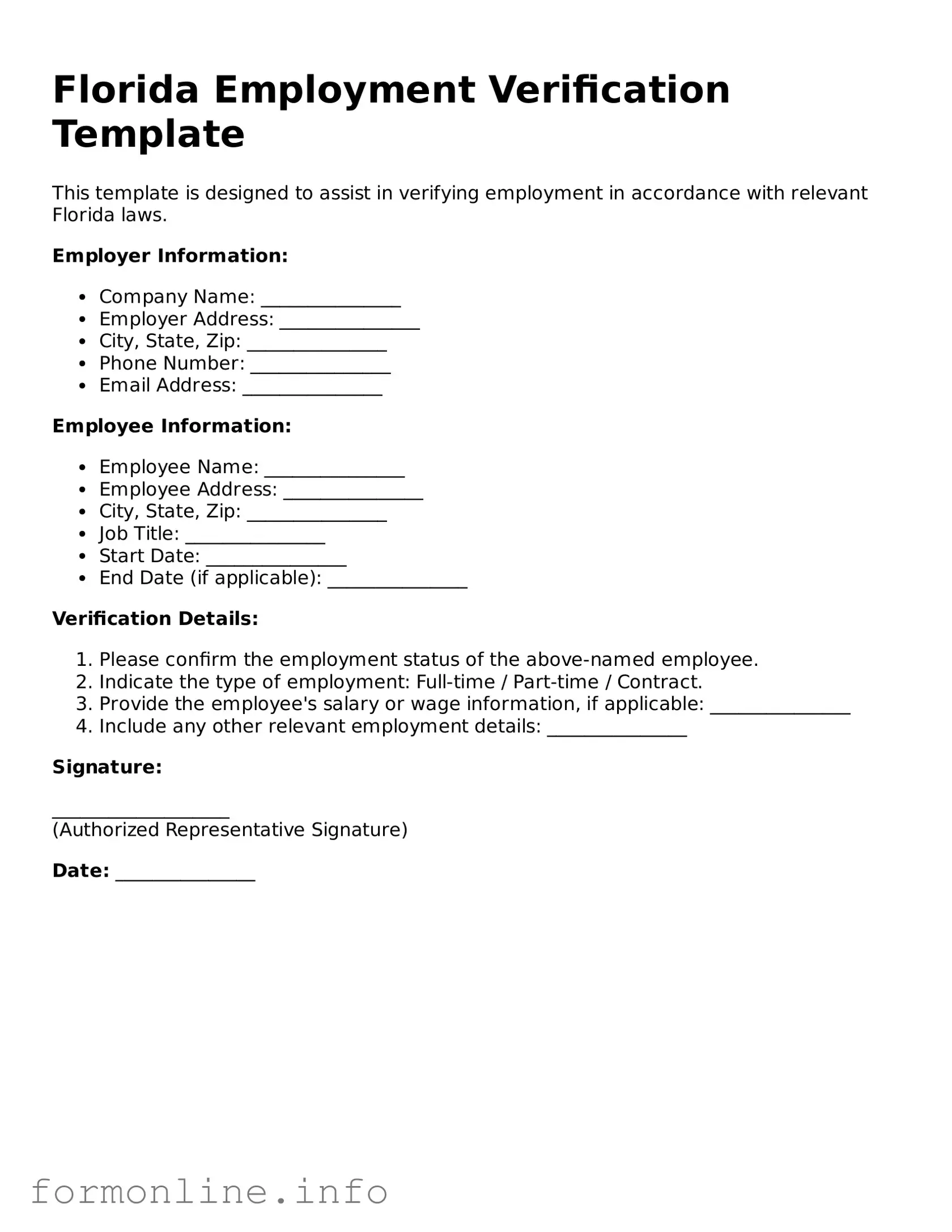Free Employment Verification Template for Florida State
The Florida Employment Verification form is a document used to confirm an individual's employment status and history in the state of Florida. It serves as an essential tool for employers and employees alike, facilitating accurate communication about job qualifications and work experience. If you need to complete this form, please click the button below to get started.
Prepare Form Online
